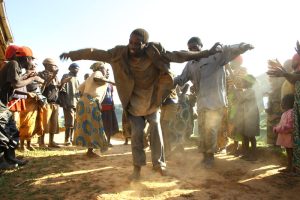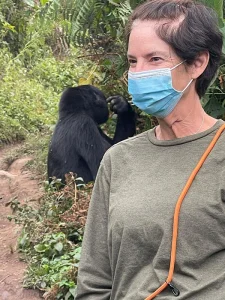How Long is Chimpanzee Trekking in Kibale?
Chimpanzee trekking in Kibale Forest National Park is one of Uganda’s most sought-after primate adventures. As the “Primate Capital of the World,” Kibale boasts the highest concentration of chimpanzees in East Africa, offering visitors a unique opportunity to observe our closest living relatives in the wild. One of the most common questions among travelers planning this experience is: How long does chimpanzee trekking in Kibale take? Below is a detailed guide that explains the timing, structure, and what to expect on the day of your trek.
How Long Does Chimpanzee Trekking Take?
The duration of chimpanzee trekking in Kibale generally ranges from 2 to 5 hours. This total includes the time spent walking through the forest to locate the chimps, observing them in their natural habitat, and hiking back out of the forest. The trek’s length can vary depending on how far the chimpanzee groups have moved, the terrain, and the pace of your group.
How Long Do You Spend with the Chimpanzees?
Once you locate a chimpanzee troop, you are allowed to spend exactly one hour with them. This time is strictly regulated by the Uganda Wildlife Authority (UWA) to protect the chimps from prolonged human interaction, which can affect their behavior and expose them to disease. During this hour, you can watch the chimpanzees feed, play, groom each other, and interact within their social groups. Photography is permitted, but flash is strictly prohibited.
What Time Does the Trek Begin?
Kibale National Park offers two chimpanzee trekking sessions per day:
- Morning session: Begins at 8:00 AM (check-in required by 7:00 AM)
- Afternoon session: Begins at 2:00 PM (check-in by 1:00 PM)
All visitors must report to the Kanyanchu Visitor Centre, where they will register, be assigned a ranger guide, and receive a pre-trek briefing. These times are designed to align with the chimps’ most active periods, increasing your chances of a successful sighting.
Is It a Full-Day Activity?
No, standard chimpanzee trekking is not a full-day activity. While the entire experience can last up to five hours, most treks conclude within three to four hours, allowing time for other activities in the area or a return to your lodge. However, there is an extended option known as the Chimpanzee Habituation Experience for those interested in spending a full day in the forest.
What Is the Chimpanzee Habituation Experience?
The Chimpanzee Habituation Experience (CHEX) is available only in Kibale Forest and allows visitors to spend 4 to 6 hours or more with a semi-habituated chimpanzee group. Unlike standard trekking, where you observe fully habituated chimpanzees for one hour, CHEX immerses you in the research and habituation process. You’ll join a team of rangers and researchers as they follow the chimps from the time they leave their nests in the morning until they settle again in the evening.
This experience is ideal for those who are passionate about primates, conservation, or wildlife photography, as it offers deeper insight and longer interaction with the animals.
How Difficult is the Trek?
Chimpanzee trekking in Kibale is considered moderate in terms of physical difficulty. The terrain is not as steep or rugged as some mountain gorilla trekking trails, but it can still be challenging. The forest can be dense, and the trails may be muddy or slippery, especially during the rainy season. Trekkers should be in average physical condition and wear sturdy hiking boots, long trousers, and carry water, snacks, insect repellent, and a rain jacket.
Where in Kibale Does Trekking Take Place?
The majority of chimpanzee trekking activities begin at the Kanyanchu Visitor Centre, located in the central part of Kibale Forest. This area has the highest density of habituated chimpanzees and well-maintained trails that improve the trekking experience. Success rates for sightings in this part of the park are above 90 percent, making it one of the most reliable places in Africa to see wild chimpanzees.
What Should You Bring for the Trek?
To ensure comfort and safety during your chimpanzee trekking experience, it’s important to pack appropriately. Recommended items include:
- Comfortable hiking boots
- Long-sleeved shirt and long trousers
- Light rain jacket or poncho
- A daypack with water and snacks
- Camera (no flash allowed)
- Insect repellent
- Sunscreen
- A hat or cap for sun protection
Most lodges near Kibale Forest can help you prepare for the trek the night before and even provide packed lunches or snacks.
When is the Best Time to Go Chimpanzee Trekking?
Chimpanzee trekking in Kibale is available all year round, but the dry seasons (June to September and December to February) are generally considered the best times to visit. During these months, the forest trails are drier and easier to navigate. However, the rainy season (March to May and October to November) can offer a lush, vibrant forest with fewer visitors, although the trails can be more slippery.
Chimp sightings are relatively consistent year-round due to the high chimp population density in the park.
Is There an Age Limit for Chimpanzee Trekking?
Yes, the minimum age for chimpanzee trekking in Kibale is 12 years. This regulation helps to ensure safety and minimize disturbance to the animals. Children younger than 12 are not allowed on treks but can enjoy other nature-based activities near the park.
How Much Does It Cost?
The cost of a chimpanzee trekking permit in Kibale as of 2025 is:
- $250 per person for foreign non-residents
- $200 per person for foreign residents
- UGX 180,000 for East African citizens
The Chimpanzee Habituation Experience costs slightly more, usually around:
- $300 per person for foreign non-residents
These permits include the services of a ranger guide and park entry fees.
How Does Chimpanzee Trekking Compare to Gorilla Trekking?
Chimpanzee trekking is different from gorilla trekking in several ways. Chimps are more active and tend to move faster and higher into the trees, making them a bit harder to photograph than gorillas. However, their vocalizations, dynamic interactions, and energy make for an exciting and highly rewarding wildlife experience.
Gorilla trekking, on the other hand, tends to be quieter and more stationary, allowing for a different kind of emotional connection. Many travelers choose to combine both experiences during their Uganda safari for a more complete primate adventure.
Final Thoughts
Chimpanzee trekking in Kibale Forest is a half-day adventure lasting between 2 to 5 hours, with one hour spent in the presence of these intelligent and charismatic primates. The trek is available in both morning and afternoon sessions, with the Chimpanzee Habituation Experience offering a longer, more immersive alternative. Whether you’re an adventurer, photographer, conservationist, or nature lover, Kibale’s chimpanzee trekking provides an unforgettable opportunity to witness primates in one of Africa’s most biodiverse rainforests.
Planning your chimpanzee trekking adventure with a reputable tour operator ensures a smooth experience, including permit acquisition, transportation, and accommodation arrangements. With the right preparation and timing, chimpanzee trekking in Kibale can become one of the most memorable highlights of your African safari.



